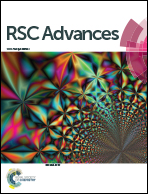Prevention of active-site destruction during the synthesis of high performance non-Pt cathode catalyst for fuel cells†
Abstract
Active-site destruction during the synthesis of porous non-Pt catalysts for the oxygen reduction reaction (ORR) is investigated in detail. Because of the carbon erosion caused by CO2 generated from the decomposition of CaCO3 template, active-sites are destroyed during the formation of the macroporous carbon-supported cobalt catalyst (Co/N-MPC) using Co-coordinated glucose–urea resin and a CaCO3 template. Removal of the CaCO3 template before its decomposition can effectively suppress this site destruction, thereby leading to a higher content of catalytic nitrogen species in the catalyst. Nitrogen-containing active-sites are unstable at temperatures over 800 °C. After optimizing the template removal and carbonization temperatures, the synthesized Co/N-MPC exhibits high catalytic activity towards ORR in both alkaline and acidic electrolytes. Its electron transfer number reaches 3.65 in alkaline and 3.75 in acidic electrolytes, respectively. The direct borohydride fuel cell with the synthesized Co/N-MPC shows a power density as high as 215 mW cm−2, which is comparable to that of the cell using 28.6 wt% Pt/C as a cathode catalyst under ambient conditions.



 Please wait while we load your content...
Please wait while we load your content...